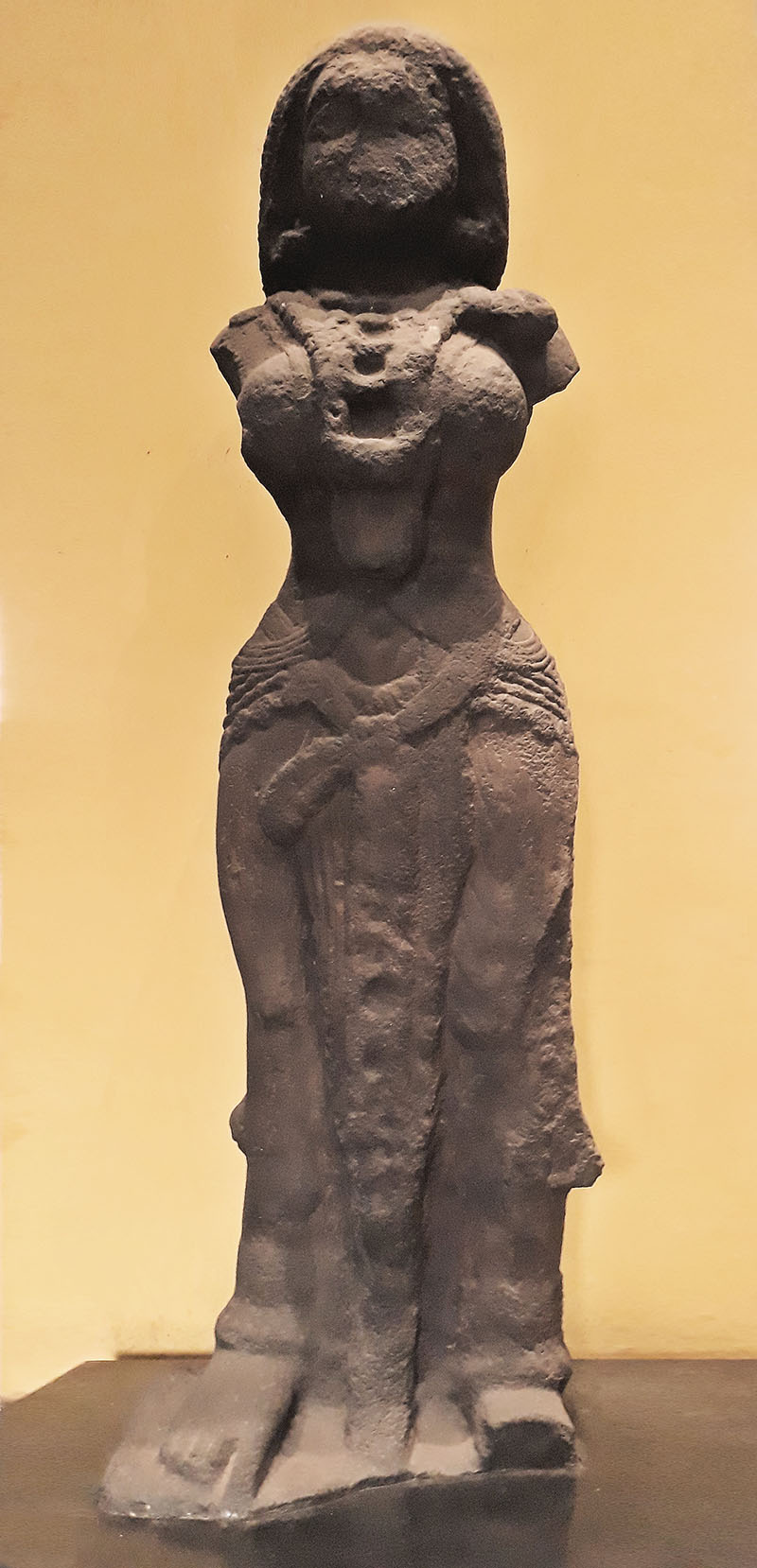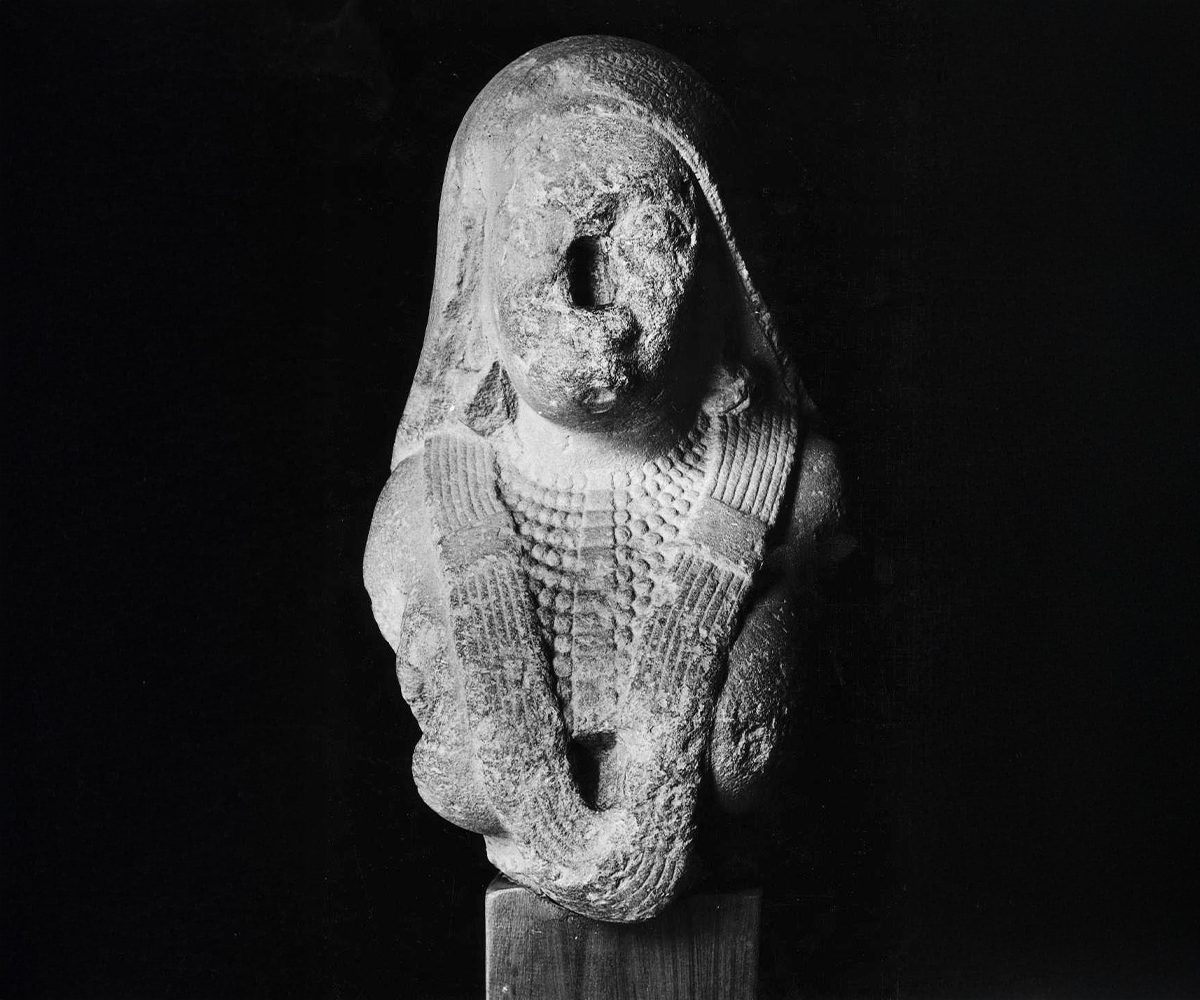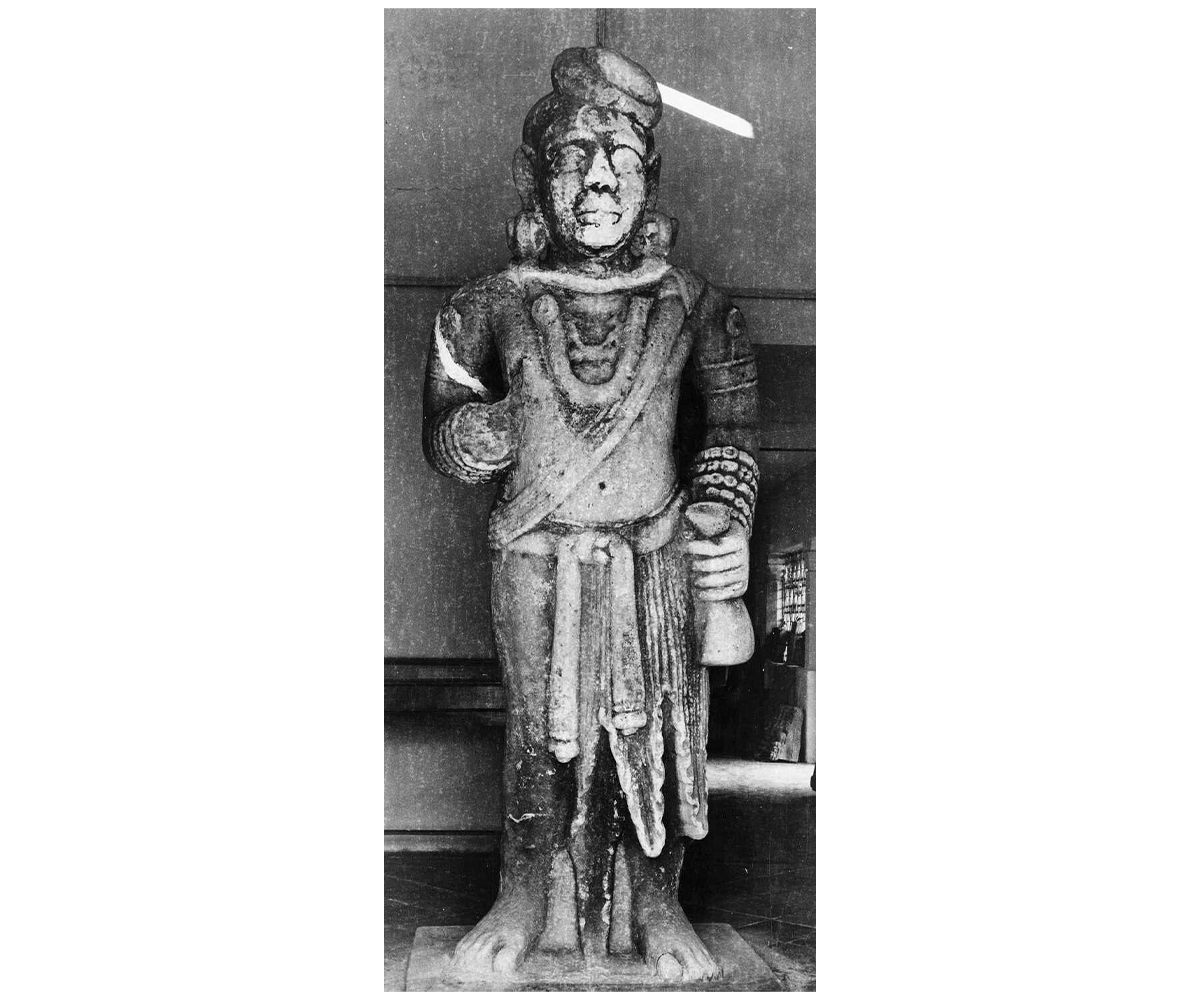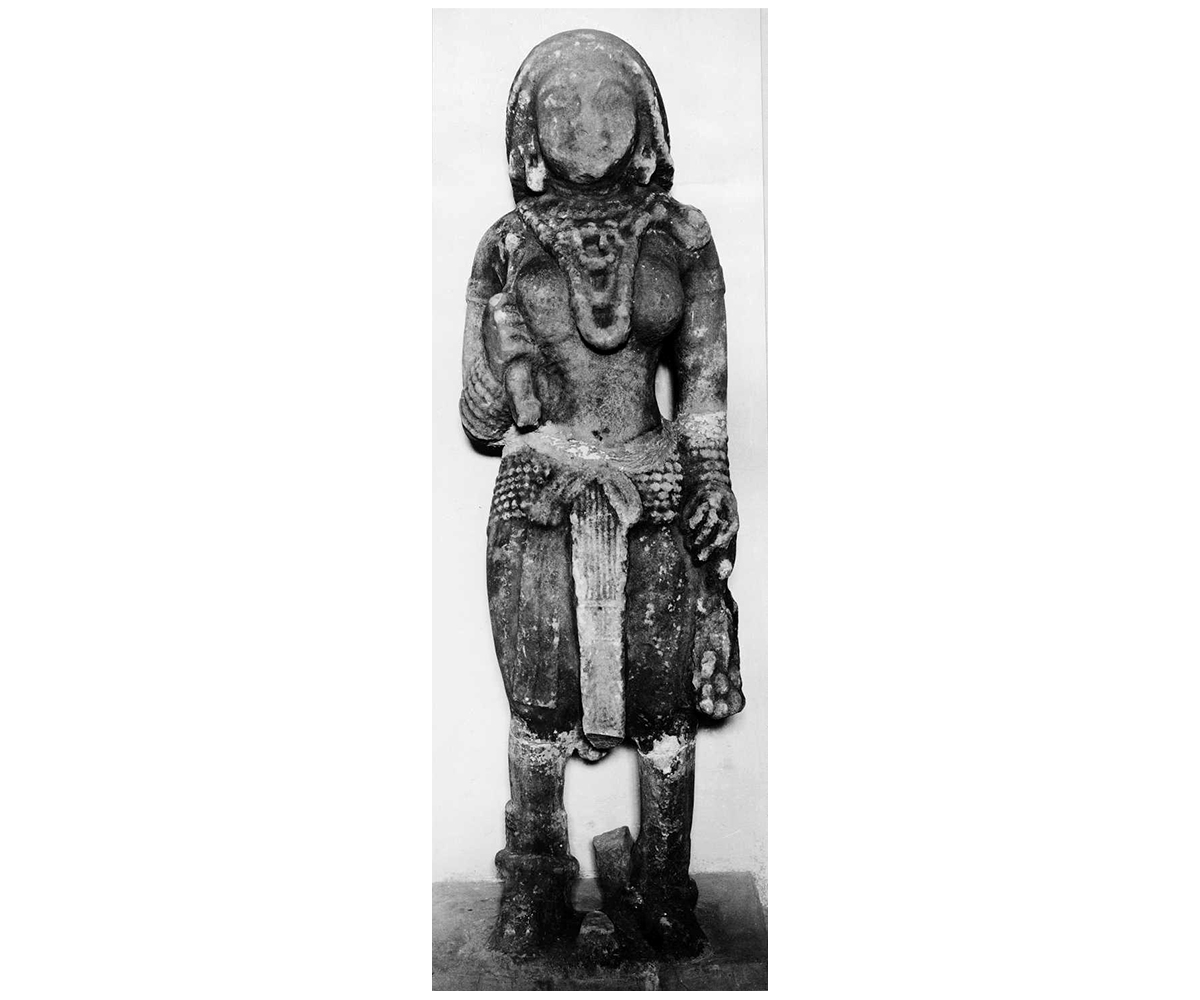Four sandstone figures dated to the last centuries BCE, the Besnagar yaksha and yakshis were recovered from Besnagar (now Vidisha) in present-day Madhya Pradesh. Their discovery suggests that Besnagar may once have been an important centre for the production of free-standing sculptures.
The Besnagar figures have provoked considerable debate over their position in the chronology of early Indian art. They feature more naturalistic proportions and softer contoured forms than the relatively linear relief sculptures of the Bharhut stupa, dating to c. 200 BCE; however they are less fully rounded than sculptures at Sanchi, especially those on the toranas of Sanchi Stupa I dating to the first century CE.
The first and best known of these figures, called the Besnagar Yakshi, was recovered by the British army officer and archaeologist Alexander Cunningham in 1875. It depicts a standing female with round breasts and wide hips. The statue is missing both arms, has a face that shows some damage and is rendered with several strands of necklaces, anklets and armlets. In 1945, another yakshi was discovered, with a damaged face and only the head and torso intact. Similar to the previous figure — and to examples from Bharhut — this second yakshi is depicted with many-stranded, beaded necklaces. Additionally, it has an oval face, with hair covered by a veil that extends beyond the nape of the neck.
In the 1960s, a yaksha and a yakshi, better preserved than the previous two figures, were recovered from the nearby Betwa river due to a dry season that had caused its waters to recede. The yaksha statue, standing over three metres tall, is the best preserved among all four Besnagar figures. It depicts a male in a squatting position, with a larger head, sturdy neck, broad shoulders, rounded belly and knotted hair. The figure is wearing a dhoti and is adorned with multi-stranded necklaces, thick spiral earrings and armlets. It holds a bag of coins in the left hand, leading to scholars identifying it as Kubera. The accompanying yakshi is shorter in stature and shows greater damage. In one of the figure’s hands are what appears to be a branch of mango leaves and fruits, while the other hand clutches an object that has been damaged beyond recognition; some speculate that it might be the handle of a chauri.











